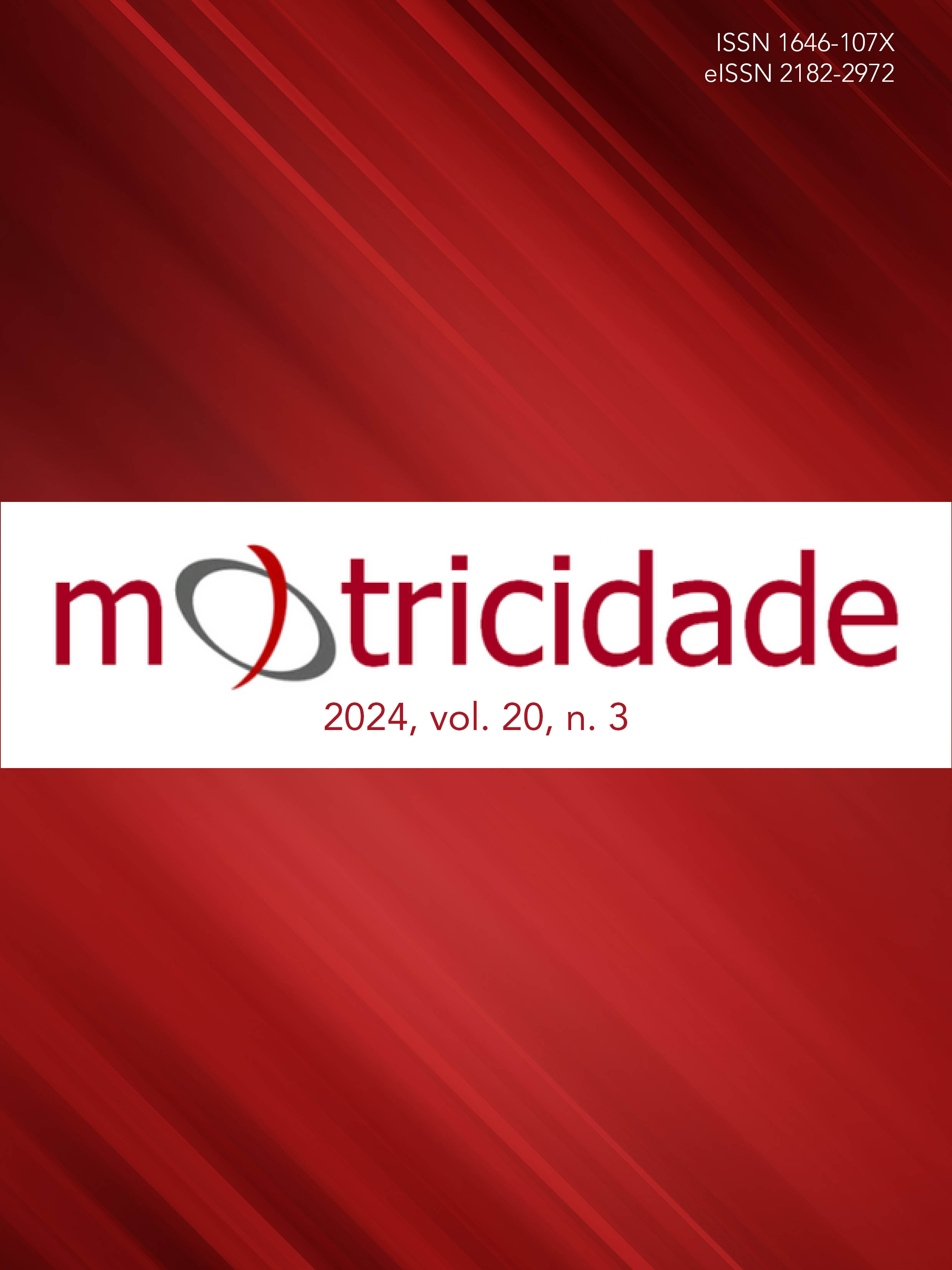Post-Activation Potentiation Enhancement of Countermovement Jump Performance using Velocity-based Conditioning Protocols with High-loads in Active Men and Women
DOI:
https://doi.org/10.6063/motricidade.33061Palavras-chave:
Velocity-based training, power, strength, velocity loss, resistance trainingResumo
Post-activation performance enhancement (PAPE) refers to the temporary improvement in physical abilities resulting from a previous conditioning activity (CA), and velocity-based resistance training has been proposed to optimise PAPE. The present study aimed to evaluate the optimal rest interval to induce PAPE in the countermovement jump using heavy parallel squats monitored by the velocity loss (VL) threshold. The study had a randomised repeated measures design, with three sessions that included a control session and two different squat conditions (80% of 1 repetition maximum (RM) with 10% and 30% VL of mean propulsive velocity). Ten men (age 21.9±1.16 years, height 1.8±0.04m, body weight 78.5±9.9kg, relative strength: 1.4±0.29kg×kg-1) and ten women (age 20.7±1.16 years, height 1.6±0.06m, body weight 56.9±4.67kg, relative strength: 1.1±0.19kg×kg-1) participated in the study. They had at least 1 year of experience with the back squat but no experience in power training. Measurements were taken at baseline and at six time points after the conditioning activity or rest period. The study found no significant effects between intervention and moment and no optimal rest time to induce PAPE, but women had significantly lower countermovement jump (CMJ) values than men(Mmen = 30.01, SE = 1.35; 95% CI 27.17 - 32.84, Mwomen = 24.33, SE = 1.35, 95% CI = 21.50 - 27.16), but when values were normalised to body weight, there were no significant differences. In conclusion, a single set of 80% 1RM in the squat to a VL of 10% or 30% is not sufficient to induce PAPE in CMJ; therefore, there is no optimal rest time.
Downloads
Publicado
Edição
Secção
Licença
Os autores dos manuscritos submetidos para publicação deverão ceder, a título integral e permanente, os direitos de autor (copyright) à revista Motricidade e às Edições Desafio Singular. A cedência de direitos de autor permite a publicação e divulgação do artigo em formato impresso ou eletrónico e entrará em vigor a partir da data de aceitação do manuscrito. Os autores concedem, ainda, os direitos para a revista Motricidade utilizar e explorar o respetivo artigo, nomeadamente para licenciar, ceder ou vender o seu conteúdo a bases de resumos/indexação ou outras entidades.
Nos termos da licença “Creative Commons”, os autores poderão reproduzir um número razoável de exemplares para uso pessoal ou profissional, mas sem fins comerciais. Nos termos da licença SHERPA/RoMEO, os autores poderão, ainda, disponibilizar/arquivar uma cópia digital final (versão postprint) do artigo no seu website ou no repositório científico da sua instituição.

